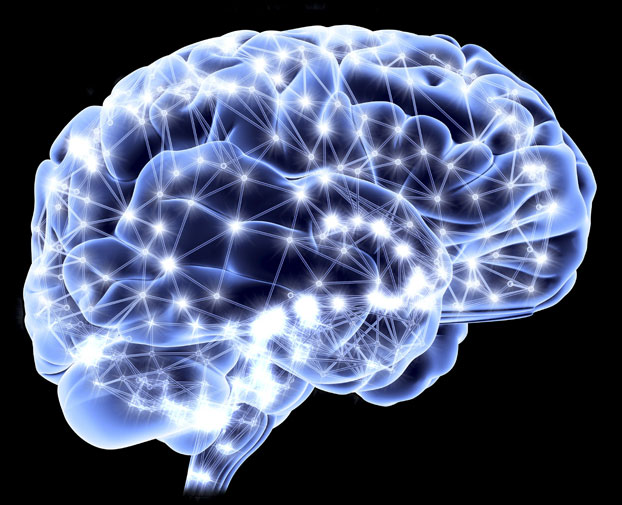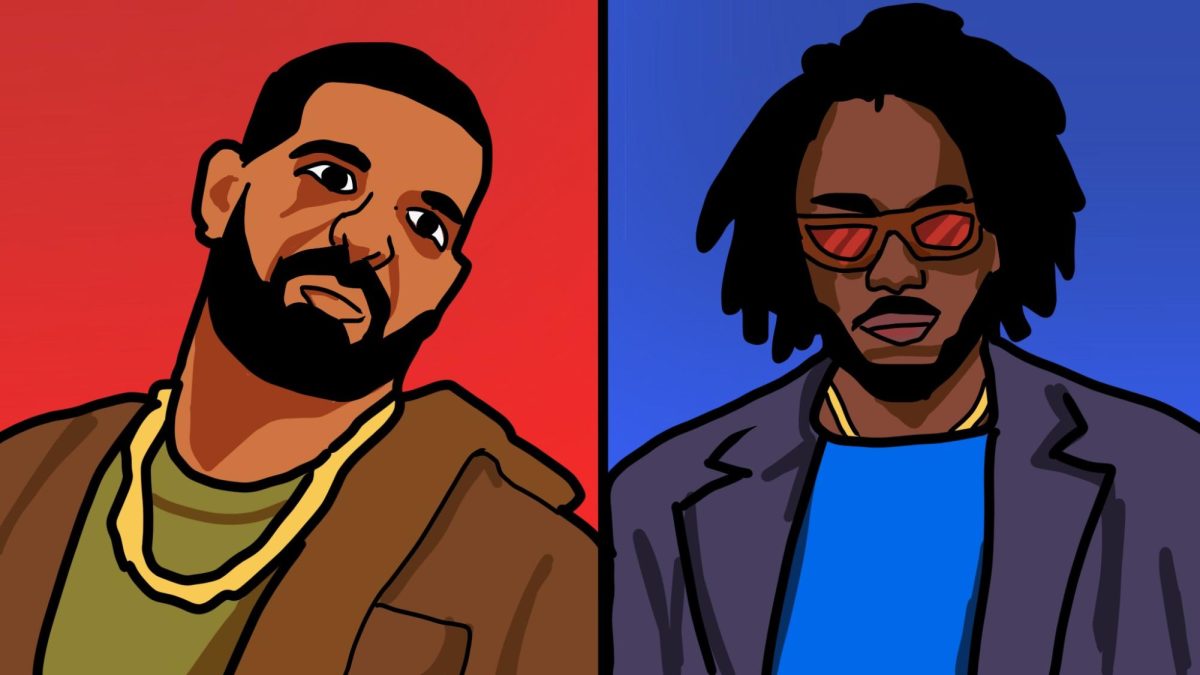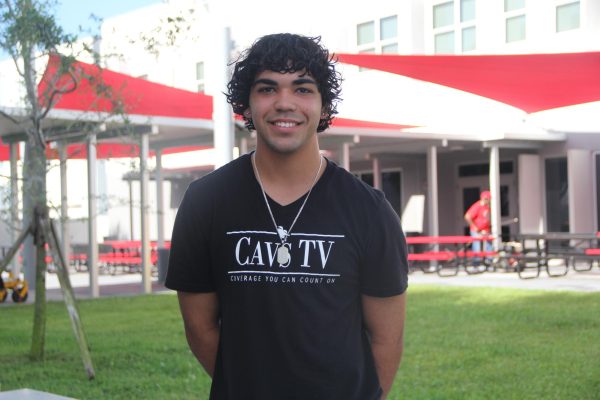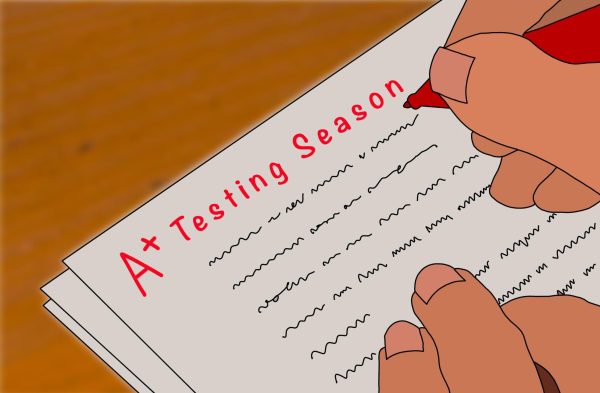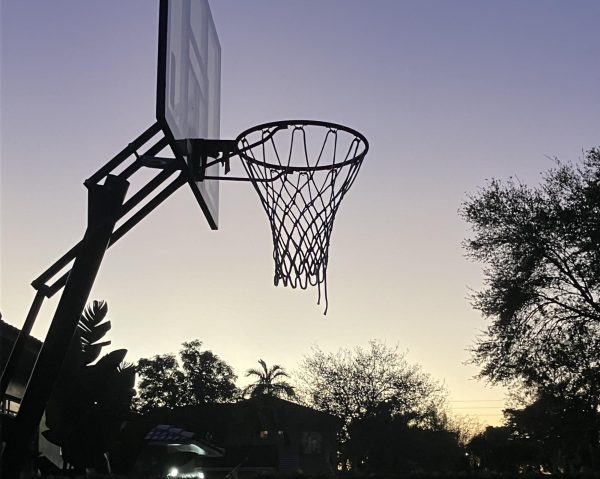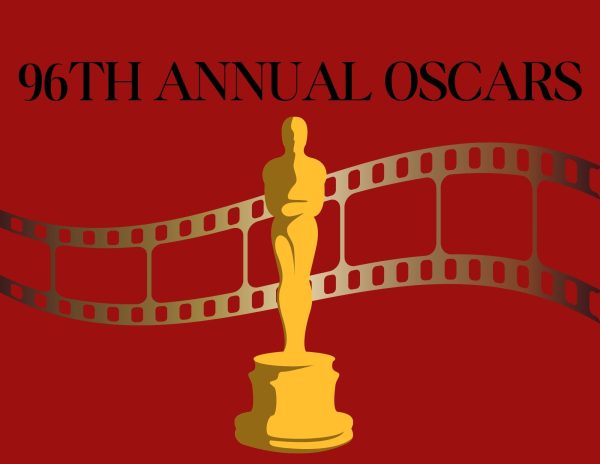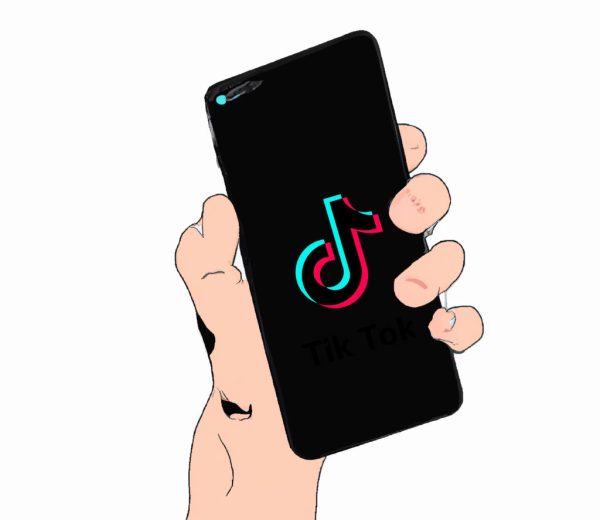The Other Side of Sports
The brain is negatively impacted by concussions.
Dec 9, 2015
When fans cheer on their favorite teams, everyone is caught up in the game. Time slows, but is charged by the fanfare in the stadium. That is, until someone gets injured. A player crumbles to the ground. Time screeches to a stop; the energy changes. We often forget the dangers players face out on the field or on the court amid all the happy cheers, game day wardrobe, and assortment of stadium food. However, these injuries are something that shouldn’t be brushed over, especially concussions.
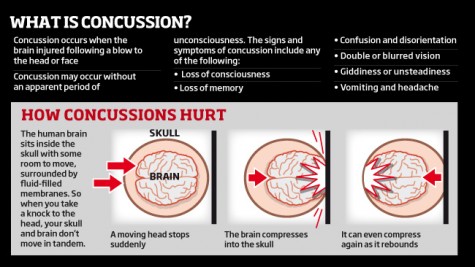
This chart shows the traumatic movements the brain experiences during an impact that causes a concussion.
Concussions are an “injury to the brain or spinal cord due to jarring from a blow, fall, or the like.” In the past, concussions had even less recognition than they do today. Coaches and doctors alike sent players back into the game after jarring blows, not even thinking to evaluate a player’s cognitive function. There has been a long road to emphasizing the dangers present in this brain injury.
“Not a lot is understood about concussions. There is definitely a chemical disruption inside of the brain. In addition, there is some evidence of actual cell damage. What makes concussions so dangerous is that you have damage to two parts of the brain; caused by contra coup forces, the brain, [which] floats in cerebral fluid, will bounce off one end of the skull and then hit the back of the skull causing damage in two places. No one really knows why some people are affected more than others. Definitely impact and rotational forces all have something in common. There is also something to be said about age. There is more likelihood of permanent damage in students under the age of 18 than any other group,” former athletic trainer and International Baccalaureate (IB) Biology teacher Mr. Molina said.
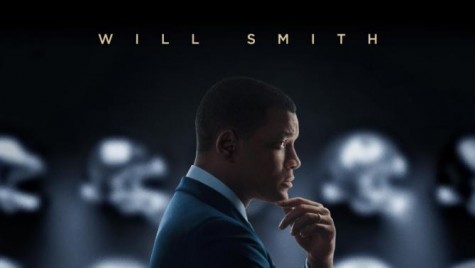
The image shows the poster art for the film chronicling one doctor’s journey with raising awareness about the dangers of concussions.
A new movie, Concussion, starring Will Smith and in theaters Christmas day, chronicles the struggle of Dr. Bennet Omalu to raise awareness about brain trauma after discovering brain damage on an National Football League (NFL) player while performing an autopsy. This movie comes after a stream of NFL players worked to notify the sport and medical worlds about their life-altering injuries. Some players have committed suicide due to the severity of their brain injuries and how they have impacted their lives. The method of suicide chosen by these players are often ones that leave their brain intact, allowing it to be donated to science in order to conduct research and learn more about concussions.
According to a study published in the Journal of Athletic Training, “concussions represented 8.9% … of all high school athletic injuries and 5.8% … of all collegiate athletic injuries.” With cases of concussions on the rise, stricter sports safety procedures are being enforced more vigorously, and rightfully so.
“I can tell you that the rules were necessary. We are finally at the point where our athletes are actually being taken serious[ly]. At the moment, it seems a little epidemic, but that will begin to change and settle down as we start to understand the symptoms and athletes understand the importance of the injury as well,” Mr. Molina said.
Concussions come with unpleasant symptoms that include affected recall, appearing dazed or stunned, mood changes, headaches, nausea and feeling sluggish, as listed by the Center for Disease Control and Prevention (CDC). There is also risk of second impact syndrome (SIS). SIS is “a very rare condition in which a second concussion occurs before a first concussion has properly healed, causing rapid and severe brain swelling and often catastrophic results.” Recovery time, therefore, is key. While the symptoms of concussions are serious, and consequences of avoiding proper care, so life-altering, many people fail to accept the severity, and procedures are not enforced with enough strength.
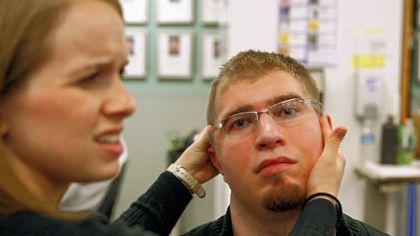
Plevretes working in therapy.
There are also pressures on athletes to get back in the game. Take the story of Preston Plevretes. Plevretes suffered a mild concussion in football practice and was cleared to play despite feeling symptomatic, as no regulations were in place at the time. Plevertes decided to play in the next game on Nov. 5th, 2005 and was hit hard. Unfortunately, he experienced SIS. Despite years of surgery and therapy, today Plevretes remains severely disabled. Plevretes works hard with his family to raise awareness and voice support for stricter regulations. Check out his emotional story here.
Another issue is the handling of concussions in the classroom environment. Some teachers are more considerate than others, possibly due to the lax way in which concussions were formerly handled. Students with concussions have their cognitive function impaired and teachers should be made aware of how to work with students undergoing these difficult symptoms.
“I completely agree with the current protocol. Until there is a better understanding of the effects of concussions, we need to do everything we can to ensure the safety of our students. I do think the current guidelines are adequate; however, there should be more information given to all students and parents earlier than high school. I also think headgear should be tested in all contact sports to help prevent concussions,” IB Psychology teacher and cross country coach Mr. Nelson said.
Marla Chavez is an IB senior and basketball and softball player. Chavez received her concussion Dec. 24, 2014 during a basketball practice when she tripped over a teammate’s leg and hit the back of her head.
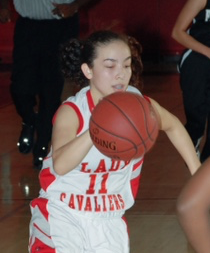
When I got my concussion, [it was during] winter break so I didn’t really have any help [and] I didn’t know I had a concussion until when I got back to school and I spoke to the trainer. Then, the trainer helped me a lot. But before I went to go see the doctor, I didn’t know what to do so I still used my cell phone which can actually slow down your brain’s recovery time.
— Marla Chavez
The concussion has changed her daily life immensely, even almost a year later.
“In my personal life, I wake up with headaches in the morning, sometimes; not that much anymore. I get really tired and when I get home from school, if I don’t have any activity after school, I have to take a nap before doing anything because I can’t process the information because I’m too tired. Academically, I had to get out of [Pre-calculus] because I was sleeping in that class and then in Math Studies I don’t understand. I’m having trouble in math and in psychology; I don’t remember stuff from last year,” Chavez said.
While many say concussion treatment has improved immensely, it is not enough. More protocols need to be in place for concussions, especially for student-athletes, like Chavez. Concussions are serious injuries that often get overlooked, given that they are not visible. Sports regulations should pay more attention to their prevention and care. Pre-concussion tests and informed athletic trainers are an important step, but more athletes, parents, teachers, and coaches need to be more informed about the dangers of concussions.


